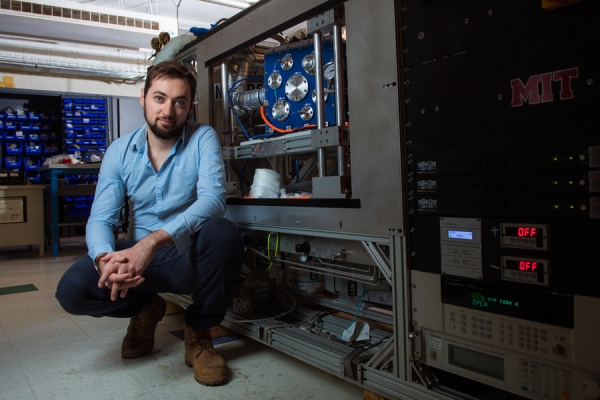To launch extended missions in space, the National Aeronautics and Space Administration (NASA) is borrowing a page from the nuclear engineering industry: It is trying to understand how boiling works.
Planning for long-term missions has NASA researching ways of packing the least amount of cryogenic fuel possible for efficient liftoff. One potential solution is to refuel the rocket in space using fuel depots placed in low Earth orbits. This way, the spacecraft can carry the lightest fuel load — enough to reach the low Earth orbit to refuel as necessary and complete the mission. But refueling in space requires a thorough knowledge of cryogenic fuels.
“We [need to understand] how boiling of cryogens behaves in microgravity conditions [encountered in space],” says Florian Chavagnat, a sixth-year doctoral candidate in the Department of Nuclear Science and Engineering (NSE). After all, understanding how cryogens boil in space is critical to NASA’s fuel management strategy. The vast majority of studies on boiling evaluate fluids that boil at high temperatures, which doesn’t necessarily apply to cryogens. Under the advisement of Matteo Bucci and Emilio Baglietto, Chavagnat is working on NASA-sponsored research about cryogens and the way the lack of buoyancy in space affects boiling.
Read more at Massachusetts Institute of Technology
Photo: Florian Chavagnat's love of physics led him to study boiling heat transfer and how boiling would happen in the conditions that cryogenic rocket fuel will encounter in space. Credits: Gretchen Ertl


